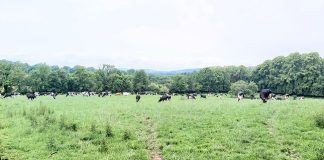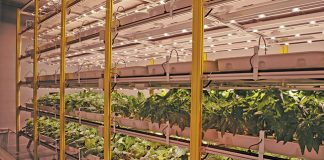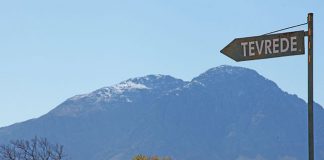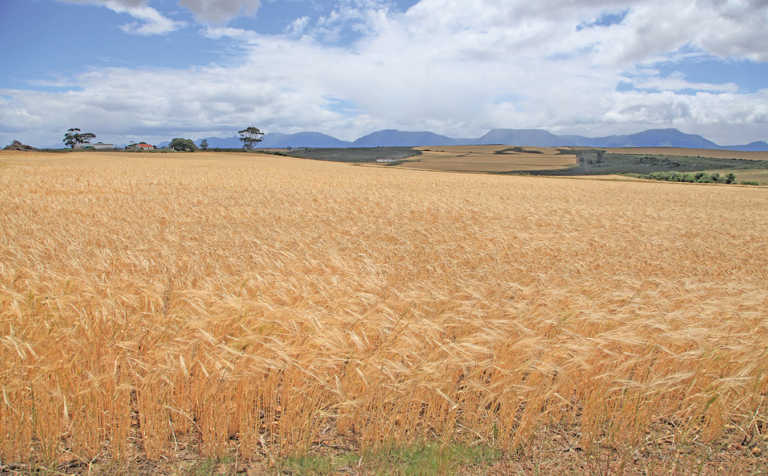
Photo: Glenneis Kriel
In the absence of subsidies and government protection, South African farmers have to be self-reliant to survive.
They cannot simply plant a crop and hope for the best; they need to plan production carefully to ride out the highs and the lows associated with agricultural production.
READ Pioneering barley in the Swartland
For Pieter de Jager who farms in partnership with his brother, André, near Albertinia in the Southern Cape region, this survival strategy starts with sound financial planning: he and his brother draw up an annual budget for each farm division to alleviate the impact of unforeseen events.
According to De Jager, sound financial planning should be the cornerstone of any farming operation.
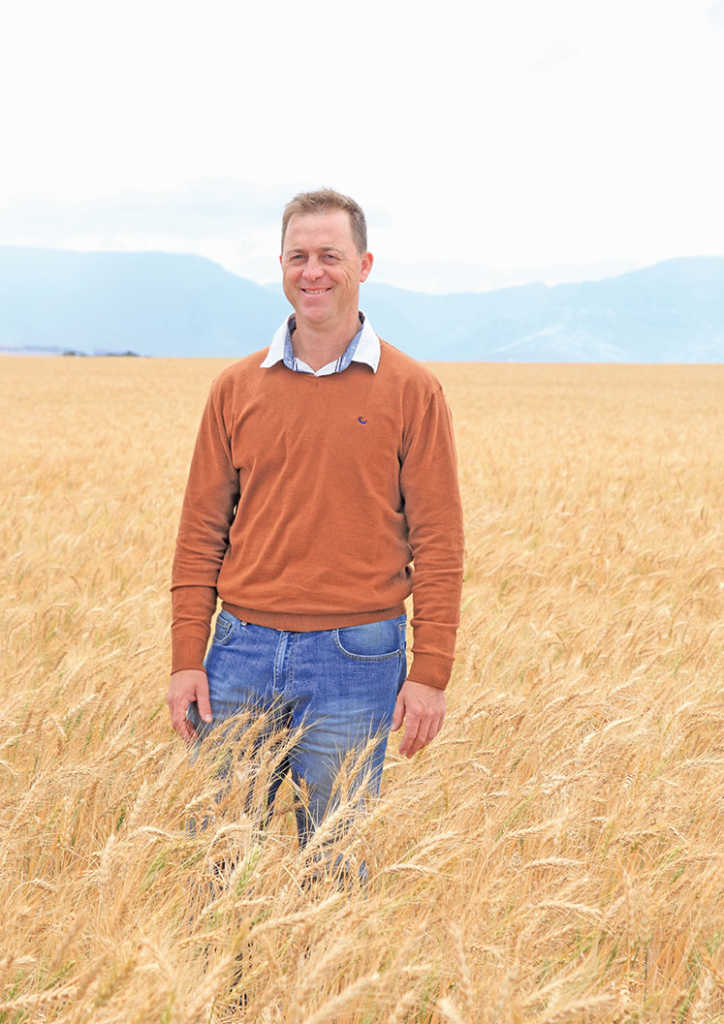
“It will not only help guide your financial decisions, but ensure a healthy cash flow, which is especially important when farming with a highly seasonal commodity, such as wheat,” he says.
Money is budgeted every year for new equipment and machinery. “We can’t afford a mechanical breakdown during a critical time, so every year or two we replace at least one of our 30 machines, from bakkies to harvesters, sprayers and planters.”
Record-keeping
The budget is adjusted regularly throughout the financial year to accommodate actual expenditure and income. A strict record is kept of income and expenditure.
“Information has to be structured in a way that reveals what is happening in terms of the farm’s profitability as a whole, but also for each farming division and camp,” he says.
READ Meet the father of modern bookkeeping, Luca Pacioli
To do this, De Jager has been using the Australian computer program, PAM, since 2011. It cost R10 000 at the time, and was an excellent investment due to the insights on farm profitability that it generates.
The costs of individual actions, such as mechanical operations and specific chemical or fertiliser applications, are analysed per hectare per hour for camps and the farm as a whole. The information is entered manually every three days.
Some of the inputs can nevertheless be made on an app while in the field.
“The program allows me to keep track of the daily expenditure and income of each camp and compare the profitability of a camp in different years and against other specific camps as well as the camps taken together,” he explains.
“Annual results are also compared with long-term results so I can keep track of the farm’s performance.”
Drought has been a constant threat in the region, and data gathered during dry years gave them an indication of how well they coped with these conditions in comparison with previous years. It has also helped guide their future drought alleviation strategies.
Sharing information
To ensure financial sustainability, the farming operation, and each division, is evaluated regularly against previous achievements as well as those of other farmers.
De Jager belongs to a study group where production records as well as ideas to overcome challenges are freely shared.
“What works on one farm won’t necessarily work on another because of the huge differences in production conditions and philosophies. But there’ll always be something you can learn from another farmer that might help to improve your situation,” he says.
READ Seasoned farmer’s tips on keeping livestock in shape
The study group uses the services of the agricultural economist André Fourie of Anker Agri for benchmarking. Fourie ranks the performance of the farms, as well as the performance of individual camps, enabling the farmers to see whether they fall in the top or bottom 30%.
“Benchmarking yourself against other farmers ensures that you don’t get carried away by sentiment. You gain a realistic picture of your farm, so you can make honest decisions,” says De Jager.
He uses his father, also Pieter, as an example. De Jager Snr switched from dairy production to ostriches in 1986, starting out with five breeding pairs and gradually building the flock until 1 000 birds a year were being slaughtered.
“It was highly profitable. We managed to buy new farms from the money made out of ostriches. Ten years ago, with the first outbreak of avian influenza, however, the risks associated with ostrich production became too high, so we got rid of the ostriches to expand our sheep component,” De Jager says.
Minimum-tillage
To stay ahead in the game, he tries to keep up with the latest farming practices and technologies.
They have been practising minimum tillage since 2004 to boost the health, structure and moisture-holding capacity of the soil. In addition to buffering the impact of dry climatic conditions, this change has helped to significantly lower mechanisation and fuel costs.
The use of precision farming since 2007 has further improved production efficiency through the variable application of lime and macro elements such as nitrogen, phosphate and potassium according to soil analysis results taken every 2ha.
READ Tillage vs no-till: a farmer’s cost comparison
“The approach helps to even out differences in camps and to save money, because you no longer do a blanket application where certain parts of the camp are overfertilised and other parts underfertilised,” he says.
To alleviate the impact of soil correction on cash flow, fertiliser application is spread over three years.
De Jager has experimented with summer crop production, planting soya beans immediately after harvesting grain, but with little success as it is too dry.
“The summer crops soak up all the moisture needed by the winter crops. Also, there isn’t enough time for the soya beans to break down before the winter crops are planted.”
Because there is not enough time to add nitrogen, a nitrogen-negative period is inevitable. Nitrogen is added later for follow-up crops.
Crop rotation
Wheat is rotated over an area of 2 600ha. “Crop rotation gives us access to a bigger arsenal of methods to combat insects, soil-borne diseases, weeds and fungal diseases. It also alleviates our market risks by exposing us to more markets,” says De Jager.
The rotation is based on soil potential, market outlook and the climatic forecast for the season. Over the past few years, for example, canola has been downscaled due to dry conditions and poor market prices, but more hectares will be planted again when prices recover.
Continuous cropping is done on high-potential camps, with the crops including wheat, canola, barley, oats and lupines. The principle is that a crop on which grass herbicides can be used, such as canola or lupines, is followed by one on which broad-leaf herbicides, such as wheat, barley and oats, can be used.
De Jager says that wheat yield is 25% higher in lands where lupines have been planted the year before. For this reason, in very high-potential lands he might plant wheat twice in a row after lupines.
He generally uses new cultivars that have proved themselves in production trials.
“I select a combination of long and medium growers for canola and wheat to reduce my climatic risk. The selection is nonetheless limited to a couple for each crop, as I don’t want to complicate production management,” he says.
Some wheat seed is saved each year to reduce planting costs the next year.
“Holding seed back shouldn’t have a negative impact on yield if no diseases were carried over by seed and if it’s cleaned properly. We get the local cooperative to clean the seed.”
On medium-potential land, the crop cycle is five years long, followed by five years of lucerne.
Sheep and cattle
The livestock component, comprising 3 000 Merino ewes and 150 Bonsmara cattle, adds value to low-potential or high-risk lands unsuitable for wheat production.
It also adds value to the wheat rotation programme by grazing crop residues and the lucerne phase of crop rotations.
“The sheep are on the stubble lands for a very limited period to prevent compaction. They basically remove seed from the previous season,” says De Jager.
Sheep are shorn every eight months, while lambs are weaned at eight weeks and sold when they weigh 45kg at four months of age.
Market diversification to increase profit
Instead of selling produce all at once, when everybody is harvesting, De Jager tries to sell his crops when prices are most favourable. By the end of November, only 5% of his wheat had been sold on Safex.
When selling wheat, he sets the lowest price at which he is willing to sell.
“When prices are unfavourable, we store our wheat at the local cooperative. Storage is so cheap, we would not have been able to build our own silo for that price,” he says.
De Jager adds that everyone makes a bad decision one time or another. The key here is to take responsibility for the mistake and learn from it.
“Blaming others for poor decisions or your problems is not constructive,” he says.
“Take responsibility for your actions and situation, and then find ways to rectify or change the situation.”
Email Pieter de Jager at [email protected].









